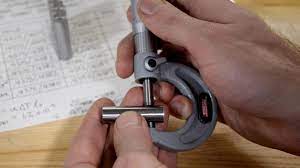 Unnecessary tight tolerances on machined components by inexperienced designers with no manufacturing experience can lead to several consequences, such as:
Unnecessary tight tolerances on machined components by inexperienced designers with no manufacturing experience can lead to several consequences, such as:
- Increased Manufacturing Costs: Tight tolerances require higher precision equipment and more careful handling of materials, leading to increased manufacturing costs. Inexperienced designers may not understand the cost implications of tight tolerances, leading to higher production expenses.
- Longer Lead Times: Tight tolerances often require more extensive quality control measures, increasing the time required to manufacture a component. This can lead to longer lead times, which can cause delays in the production process and negatively impact the delivery schedule.
- Reduced Product Quality: Inexperienced designers may not consider the limitations of manufacturing processes, leading to components that do not meet the required specifications. This can lead to reduced product quality and performance issues, impacting customer satisfaction and the company’s reputation.
- Production Scrap and Rework: Tight tolerances can result in higher scrap rates due to the higher likelihood of components not meeting the required specifications. This can lead to increased rework, increasing manufacturing costs and reducing production efficiency.
- Limitations on Supplier Selection: Tight tolerances may require specific manufacturing capabilities that are not available from all suppliers. This can limit the supplier selection and lead to increased costs and reduced flexibility.
- Design Limitations: Tight tolerances can limit the design options available to the designer, as some features may not be possible to manufacture with the required precision. This can limit innovation and creativity in product design.
Overall, unnecessary tight tolerances by inexperienced designers can lead to increased costs, longer lead times, reduced product quality, higher scrap rates, and limitations on supplier selection and design options. It is essential to balance the required precision with the limitations of the manufacturing process to ensure the most cost-effective and efficient production process.